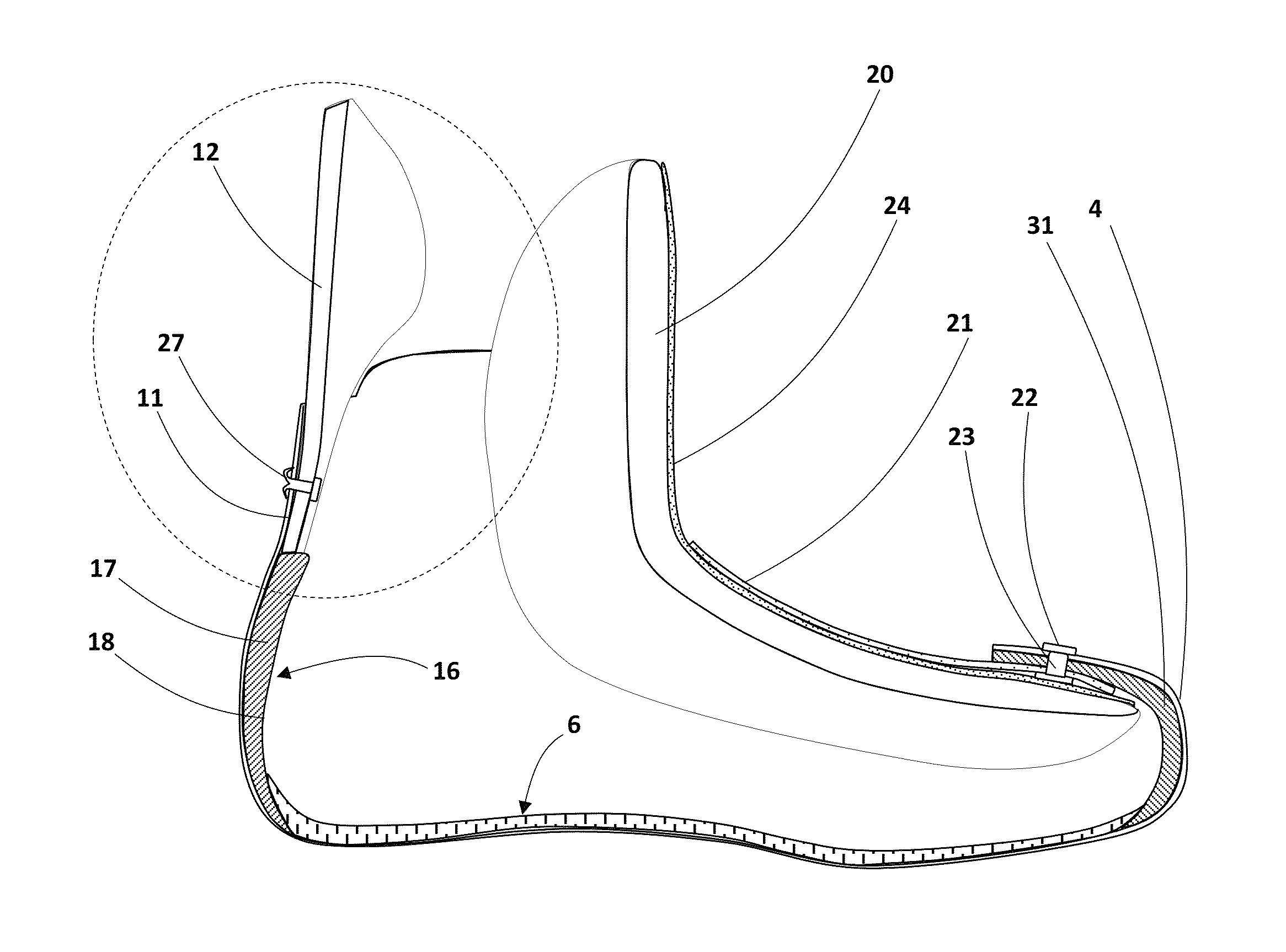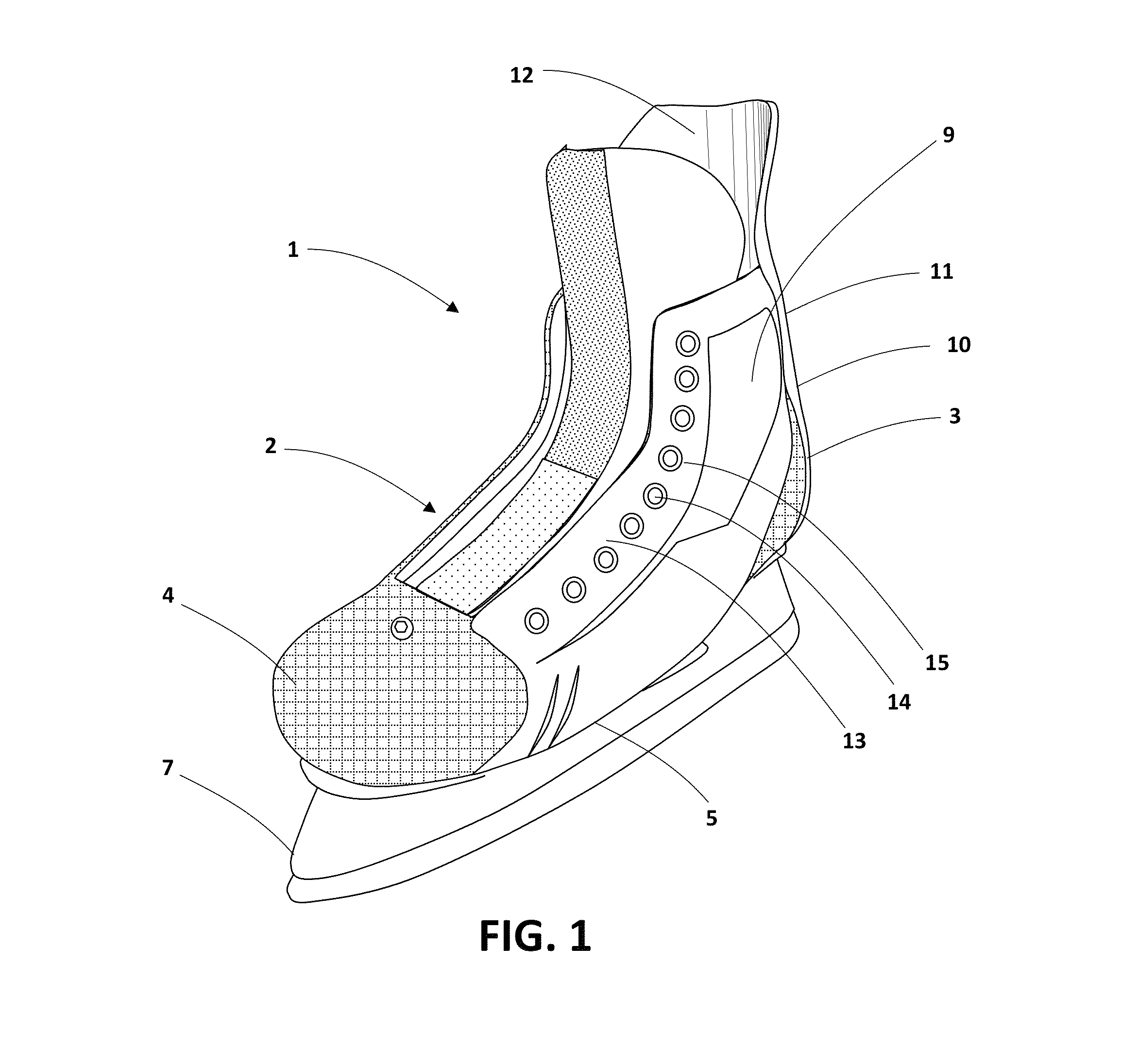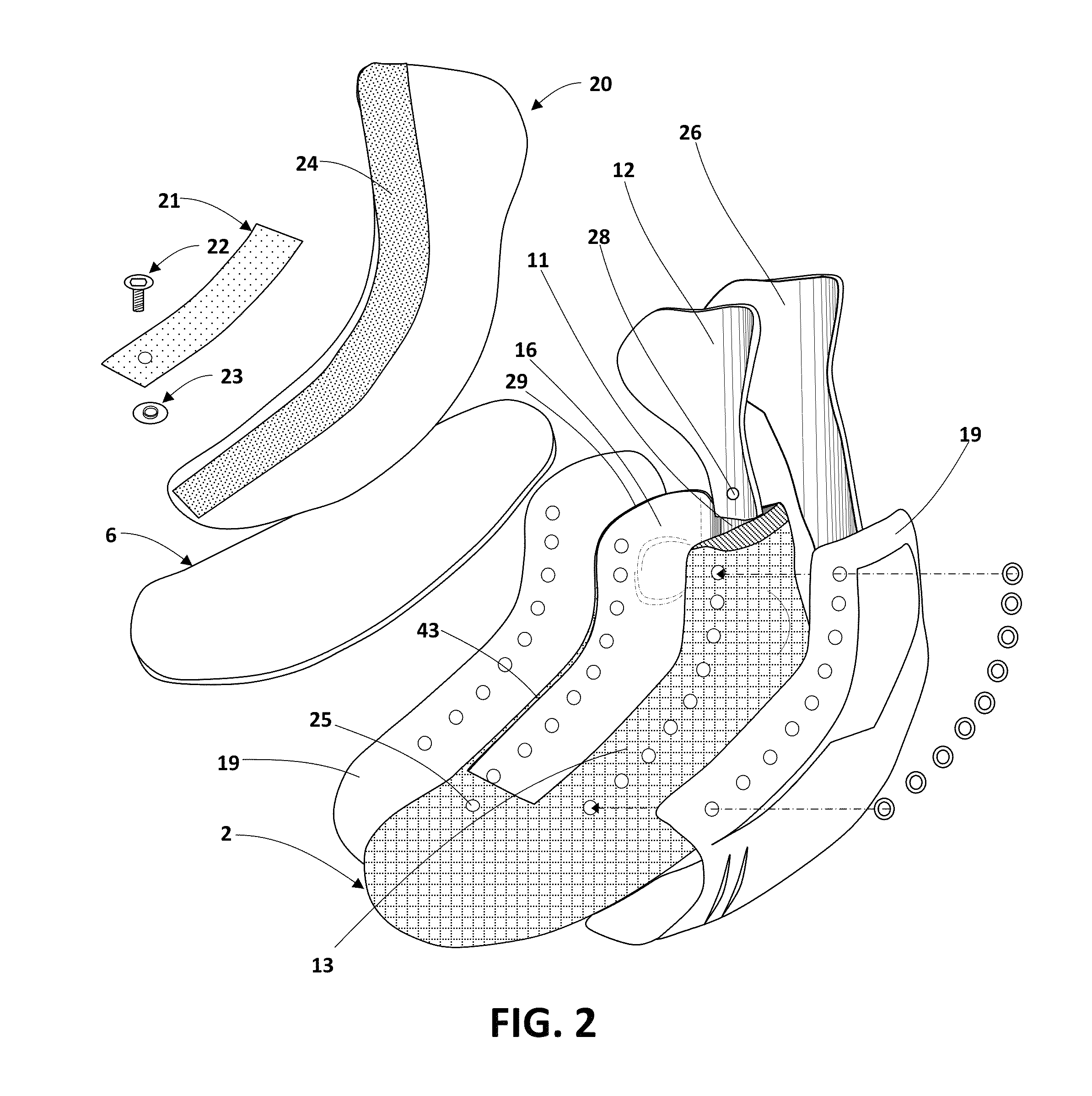Skate boot with monocoque body
a monocoque body and boot technology, applied in bootlegs, uppers, domestic applications, etc., can solve the problems of increasing weight and the potential for premature breakdown and wear through the sole of the boot, inconsistency in the final product, and higher rejection rates, so as to reduce the rejection rate, protect and protect the boot, and support the effect of the upper
- Summary
- Abstract
- Description
- Claims
- Application Information
AI Technical Summary
Benefits of technology
Problems solved by technology
Method used
Image
Examples
Embodiment Construction
[0026]FIG. 1 is a perspective view of a skate utilizing the preferred embodiments of the present invention, including a skate boot 1 for receiving a wearer's foot comprising: a monocoque skate boot body 2 comprising a heel portion 3 for receiving the heel of the foot; a toe box portion 4 for receiving the toes of the foot; a sole portion 5 for receiving an insole 6 (displayed in FIG. 2) on the inner side, and for receiving an ice skate blade holder 7 and the like on the outer surface, said sole portion comprising an arch section 8 (displayed in FIG. 4)for supporting the medial longitudinal arch of the foot; an ankle portion 9 for receiving the wearer's ankle; a lower Achilles tendon portion 10 for receiving the base of the wearer's Achilles tendon, the lower Achilles tendon portion 10 is located directly above the heel portion 3; an upper Achilles tendon portion 11 for receiving a tendon guard 12; an eyelet cuff portion 13 for receiving the top of the foot, the eyelet cuff portion 1...
PUM
| Property | Measurement | Unit |
|---|---|---|
| temperatures | aaaaa | aaaaa |
| distance | aaaaa | aaaaa |
| melting temperature | aaaaa | aaaaa |
Abstract
Description
Claims
Application Information
 Login to View More
Login to View More - R&D
- Intellectual Property
- Life Sciences
- Materials
- Tech Scout
- Unparalleled Data Quality
- Higher Quality Content
- 60% Fewer Hallucinations
Browse by: Latest US Patents, China's latest patents, Technical Efficacy Thesaurus, Application Domain, Technology Topic, Popular Technical Reports.
© 2025 PatSnap. All rights reserved.Legal|Privacy policy|Modern Slavery Act Transparency Statement|Sitemap|About US| Contact US: help@patsnap.com



